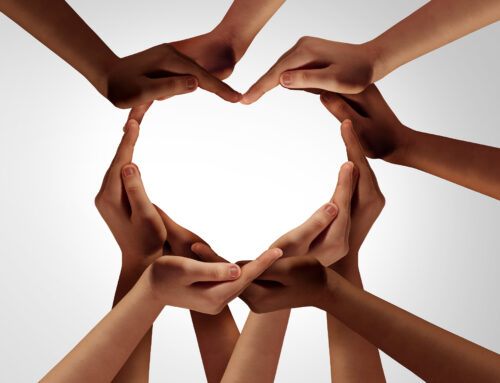How brands can authentically embrace green initiatives
In today’s world, sustainability is more than just a buzzword — it’s a critical component of responsible business practice and a significant factor influencing consumer choices. At The Toast, we understand that authentically embracing green initiatives is essential for brands that want to resonate with environmentally conscious consumers and make a positive impact on the planet. Here’s how brands can authentically integrate sustainability into their marketing strategies.
Understanding the importance of sustainability
Consumers are increasingly aware of environmental issues and are demanding more from the brands they support. They want to know that the companies they buy from are taking concrete steps to reduce their environmental footprint and promote sustainable practices. This shift in consumer behaviour presents an opportunity for brands to differentiate themselves by genuinely committing to sustainability.
A survey by Nielsen IQ found in 2018 that 81% of global respondents feel strongly that companies should help improve the environment. This indicates a substantial market for brands that prioritise sustainability.
The foundations of authentic green marketing
1. Transparency and honesty Authenticity in sustainability starts with transparency. Brands should openly share their environmental impact, the steps they are taking to improve and any challenges they face along the way. Consumers appreciate honesty and are more likely to trust a brand that communicates its sustainability journey openly..
For instance, our client Attacq has built sharing information about its sustainability efforts into a core element of its communications strategy. The company recently announced the certification of Excellence in Design for Greater Efficiencies (EDGE) for its Nexus 1 building in Waterfall City, which also serves as the Group’s headquarters. Introduced by the International Finance Corporation (IFC) in 2014, EDGE empowers developers to assess environmental impact and make informed design decisions, globally championing green building practices.
The certification represents a double milestone for Attacq, as Nexus 1 becomes the first Green Star Certified building in South Africa to also attain EDGE certification through the Green Building Council of South Africa (GBCSA). Partnering with Nedbank CIB, it also marked the first instance of a bank collaborating with a developer and acting as an EDGE Expert in a green building certification.
2. Setting realistic goals Setting ambitious yet achievable sustainability goals is crucial. Brands should outline clear, measurable objectives and provide regular updates on their progress. This shows a genuine commitment to making a difference rather than just capitalising on a trend.
The Swedish furniture brand IKEA has set a goal to become a circular business by 2030, aiming to use only renewable or recycled materials in its products. If you’re wondering what the circular economy refers to, read this UJ article about how recycling and reforestation are advanced with 4IR tech and watch the accompanying, thought-provoking Cloudebate™ produced by our client UJ (the University of Johannesburg).
Strategies for embracing green initiatives
1. Sustainable product development One of the most impactful ways brands can embrace sustainability is by developing products and packaging that are environmentally friendly. This includes using sustainable materials, minimising waste during production and designing products that are durable and recyclable.
Sustainable fashion is a passion of mine. In our print magazine days, we were privileged to employ Rachel Arthur as editorial and publishing assistant for FHM and heat magazines. Originally from the UK, Rachel was only with us for a year or two. We got to know her as a conscientious fashion buff and after she went back home, she became a pioneering leader in sustainable fashion, today in her role as Advocacy Lead – Sustainable Fashion in the UN’s Environment Programme. Read more here about what the UN is doing to promote sustainable fashion.
Locally, check out this feature via Conscious Fashion Collective for SA fashion that sets out to do its bit to protect our environment.
2. Eco-friendly packaging Reducing the environmental impact of packaging is another critical area. Brands can use recycled or biodegradable materials and design packaging that minimises waste.
I love and support the sustainability vision by Woolworths for zero packaging waste to landfill and for all packaging to be reusable or recyclable in future. My local Woolies removed plastic bags at till points some time ago already and recently introduced paper bags for self-selected fruit and veggies. They also have a “bag sharing tree”, making it easy for shoppers to grab a pre-used bag if needed. In addition they have a collection box for pre-loved shoes and clothes in good condition which are recycled.
3. Green supply chain practices Ensuring that the entire supply chain operates sustainably is essential. Brands should work with suppliers who adhere to environmentally friendly practices and strive to reduce their carbon footprint throughout the production process.
Unilever has implemented a sustainable sourcing programme that requires its suppliers to meet strict environmental standards. This includes sourcing raw materials sustainably and reducing greenhouse gas emissions across the supply chain.
Communicating your green efforts
1. Brand storytelling Use storytelling to share your brand’s sustainability journey. Highlight the challenges you’ve faced, the progress you’ve made and the impact your efforts are having. Authentic stories resonate with consumers and can inspire them to support your brand.
RE100 is a global initiative bringing together the world’s most influential businesses committed to 100% renewable electricity. Recently, Investec has joined RE100 and is committed to using 100% renewable electricity across its global operations by 2030. Investec is the first business in South Africa to join RE100, the global initiative of over 400 of the world’s largest and most influential businesses committed to 100% renewable electricity. Read more here about how Investec also offers sustainability finance solutions for your home and business.
2. Engaging content Create engaging content that educates and informs your audience about sustainability. This could include website articles, video content, social media updates and infographics that highlight your green initiatives and provide tips for living more sustainably.
A while ago Twisted Toast was contracted to produce a series of sustainability Infographics for The World Wide Fund for Nature’s WWF International Global Climate & Energy Initiative in Switzerland. Check out our work here, that highlight the sustainability efforts of companies such as Sony, Volvo and Alpro in an engaging visually rich way..
3. Certifications and partnerships Partner with reputable environmental organisations and obtain certifications to validate your sustainability claims. Certifications such as Green Star Certification from the Green Building Council of SA, Global Reporting Initiative (GRI) Guidelines for Sustainability Reporting, the certification from the Better Cotton Initiative (BCI) and many others can enhance your credibility and reassure consumers of your commitment to sustainability.
Nespresso’s AAA Sustainable Quality™ Programme, developed in partnership with the Rainforest Alliance, ensures their coffee is sourced sustainably. This certification helps consumers trust that Nespresso is genuinely committed to environmental stewardship.
Conclusion
At Twisted Toast Digital, we believe sustainability should be at the heart of every brand’s strategy. By embracing green initiatives authentically and communicating efforts transparently, you can build trust, foster loyalty and make a positive impact on the planet. Sustainability is not just a trend. We strongly believe it’s a responsibility that we all share. Let’s work together to create a greener, more sustainable future, with a commitment from you and your brands to be all in… for the environment.
PS: It’s World Environment Day on 5 June. We challenge you to communicate your efforts, no matter how small to raise awareness in the month of June. #GenerationRestoration




